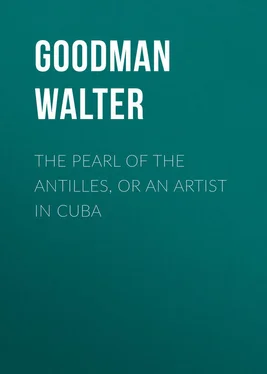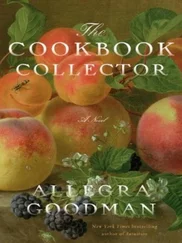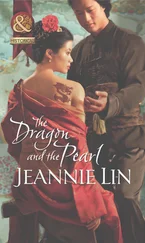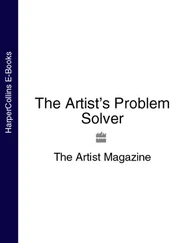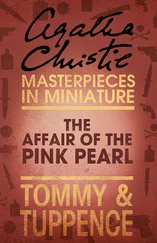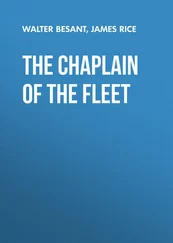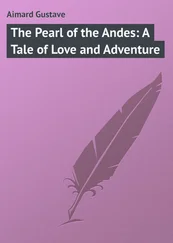Walter Goodman - The Pearl of the Antilles, or An Artist in Cuba
Здесь есть возможность читать онлайн «Walter Goodman - The Pearl of the Antilles, or An Artist in Cuba» — ознакомительный отрывок электронной книги совершенно бесплатно, а после прочтения отрывка купить полную версию. В некоторых случаях можно слушать аудио, скачать через торрент в формате fb2 и присутствует краткое содержание. Жанр: foreign_antique, foreign_prose, Путешествия и география, на английском языке. Описание произведения, (предисловие) а так же отзывы посетителей доступны на портале библиотеки ЛибКат.
- Название:The Pearl of the Antilles, or An Artist in Cuba
- Автор:
- Жанр:
- Год:неизвестен
- ISBN:нет данных
- Рейтинг книги:4 / 5. Голосов: 1
-
Избранное:Добавить в избранное
- Отзывы:
-
Ваша оценка:
- 80
- 1
- 2
- 3
- 4
- 5
The Pearl of the Antilles, or An Artist in Cuba: краткое содержание, описание и аннотация
Предлагаем к чтению аннотацию, описание, краткое содержание или предисловие (зависит от того, что написал сам автор книги «The Pearl of the Antilles, or An Artist in Cuba»). Если вы не нашли необходимую информацию о книге — напишите в комментариях, мы постараемся отыскать её.
The Pearl of the Antilles, or An Artist in Cuba — читать онлайн ознакомительный отрывок
Ниже представлен текст книги, разбитый по страницам. Система сохранения места последней прочитанной страницы, позволяет с удобством читать онлайн бесплатно книгу «The Pearl of the Antilles, or An Artist in Cuba», без необходимости каждый раз заново искать на чём Вы остановились. Поставьте закладку, и сможете в любой момент перейти на страницу, на которой закончили чтение.
Интервал:
Закладка:
Grulla, however, does not appreciate Aura's virtues; but whenever one of these vultures is visible from the patio, she shrieks like a maniac, flaps her large wings angrily, and turns wild pirouettes in the yard.
Besides our bird-models, the street criers, who pass our doors at all hours, are occasionally induced to lend their services to the cause of art.
Early in the morning la Lechera goes her rounds, with a large can of milk miraculously poised upon her head. The black milkmaid is attired in a single garment of cotton or coarse canvas; her feet and ankles are exposed, and her head is bound with a coloured handkerchief like a turban. We purchase daily of the Lechera a medio's worth of milk, but she grins incredulously, when one day we invite her to enter our studio. She is a slave belonging to the proprietor of a neighbouring farm, and what would 'mi-amo,' her master, say, or more probably 'do,' if he heard that his serf employed her time by sitting for her 'paisaje?'
The Almidonero next favours us with a 'call.' This gentleman traffics in starch, an article in great demand, being employed for stiffening a Cuban's white drill clothes. The vendor of starch is a Chinese by birth, and, like other Celestials residing in Cuba, answers to the nickname of Chow-chow, from a popular theory that the word (which in the Chinese language stands for 'provisions') expresses everything in a Chinaman's vocabulary.
Chow-chow carries upon his head a wooden tray, containing a number of circular pats of starch, of the consistency and appearance of unbaked loaves.
The Panadero, or baker's man, visits us twice a day. In the cool of the early morning the little man – an Indian by birth – is extraordinarily active and full of his business, but during the heat of mid-day, when his visit is repeated, time to him seems of no importance. Our Indian baker is usually discovered sleeping a siesta on our broad balcony, and by his side lies a flat circular bread-basket as large as the wheel of a quitrin. Despite the scorching sun, he remains in this position hatless and bare-footed.
La Cascarillera frequently passes our door with her double cry of 'Las Cosi-tas!' – 'La Cascar-il-la!' The negress offers for sale a kind of chalk with which the ladies of Cuba are in the habit of powdering their faces and necks. She also sells what she calls 'cositas francesas,' which consist of cakes and tarts prepared by the French creoles of Cuba. Many of the less opulent Madamas of the town employ their time by making French pastry, which their slaves afterwards dispose of in the public streets.
The Dulcera deals in 'dulces,' and her cry of 'Dulce de guayaba! Dulce de almiba!' proclaims that her tray contains various kinds of West Indian preserves. The Dulcera is also a slave, and consequently derives no pecuniary benefit from the sale of her sweets, unless, by pre-arrangement with her owner, a share in the profits has been allowed.
El Malojero is a dark young gentleman who perambulates the town on the back of a mule – or more correctly on the summit of a small mountain of long, freshly-gathered grass. This grass, or 'maloja' as it is called, together with maize, constitute a Creole horse's fodder, and being packed in bundles on all sides of the beast of burthen, only the head and hoofs of the animal are visible; while el Malojero, perched several feet above its back, completes the moving picture.
La Aguadora is perhaps the most attractive of all peripatetics of the pavement. It is she who provides the inhabitants with the indispensable fluid – water. The water supply of Cuba is derived from wells attached to certain houses; but those who, like ourselves, have not this convenience on the premises, have water brought to them from the nearest pump or spring. More than one Aguadora is employed to replenish our empty vessels, and, like all popular characters in Cuba, each is favoured with a distinguishing nickname. One of our water-carriers answers to the pseudonym Cachon, another is called Tatagüita, a third Mapí, while a fourth is dubbed with the imposing title of Regina. In turn, these mulatto wenches arrive from the public font with small barrels and strangely-fashioned water-jars, and deposit their contents in our reservoir and in our 'tina.'
A tina is a filter on a gigantic scale. The exterior resembles a sentry box, and is furnished on all sides with ventilating apertures through which a current of air passes. At the top of the box or cupboard is fixed a huge basin made of a porous stone, through which the water slowly drips, and is received thus filtered in an enormous earthen jar. A tin pot with a very long handle serves to ladle out the filtered liquid, and the rim of this vessel is fringed with sharp projections like a chevaux de frise, as a caution to the thirsty not to apply their lips to the ladle!
Our nymphs of the pump are more serviceable as models than any of their sister itinerants. They have symmetrical forms, which are partially revealed through the scantiness of their clothing. Their coffee-coloured features are, besides, regular and not devoid of expression.
My companion becomes artistically captivated with Regina, who serves as a model for an important picture, which Nicasio paints, but unfortunately does not sell, in Cuba!
Mapí, a mulatto girl of tender years, is equally serviceable, and plays many parts on canvas; while Cachon and Tatagüita, who are older and less comely, impersonate characters becoming their condition.
But alas for art patronage in Cuba! these and other fanciful productions do not meet with a purchaser in the Pearl of the Antilles.
CHAPTER VI.
CUBAN BEGGARS
Despite the dearth of patrons for the 'legitimate' in art, my companion and I continue to occupy our leisure moments in collecting such material as may prove attractive in a more art-loving country. Suggestions for pictures and sketches are not, however, wholly derived from the street vendors I have described. The beggars of Cuba are equally worthy of places in our sketch-books.
Spain's romantic 'Beggar on horseback,' in some respects meets with a prototype in her colony.
That apparently hapless mendicant shuffling along the white, heated road of a narrow street, is a blind negro, with the imposing nickname of Carrapatam Bunga. He is attired in a clean suit of brown holland, and he wears a broad-brimmed panama. His flat, splay feet are bare, showing where one of his toes has been consumed by a nigua, a troublesome insect which introduces itself into the foot, and, if not eradicated in time, remains there to vegetate. Across his shoulders is slung a huge canvas bag for depositing comestible alms, and in his hand is a long rustic staff. Charity with a Cuban is a leading principle of his religion, and to relieve the indigent – no matter whether the object for relief be worthy or not – is next in importance to disburdening the mind to a father confessor. Mindful of the native weakness in this respect, Carrapatam Bunga bears his sorrows from door to door, confident that his affliction and his damaged foot will command pity wheresoever he wanders. But he is impudent, and a boisterous, swaggering fellow. Hear him as he demands compassion, with his swarthy, fat face upturned to the blazing sun, and with a long cigar between his bulging lips.
'Ave Maria! here's the poor blind man; poor fellow! Give him a medio (a threepenny-piece) somebody. Does nobody hear him, el pobrecito? Come, make haste! Don't keep the poor fellow waiting. Poor Carrapatam Bunga! He is stone blind, poor fellow, and his feet are blistered and sore. Misericordia, señores. Barajo! why don't somebody answer? Which is mi s'ñora Mercedes' house? Will somebody lead me to it? Mi s'ñora Mercedes!'
Читать дальшеИнтервал:
Закладка:
Похожие книги на «The Pearl of the Antilles, or An Artist in Cuba»
Представляем Вашему вниманию похожие книги на «The Pearl of the Antilles, or An Artist in Cuba» списком для выбора. Мы отобрали схожую по названию и смыслу литературу в надежде предоставить читателям больше вариантов отыскать новые, интересные, ещё непрочитанные произведения.
Обсуждение, отзывы о книге «The Pearl of the Antilles, or An Artist in Cuba» и просто собственные мнения читателей. Оставьте ваши комментарии, напишите, что Вы думаете о произведении, его смысле или главных героях. Укажите что конкретно понравилось, а что нет, и почему Вы так считаете.
